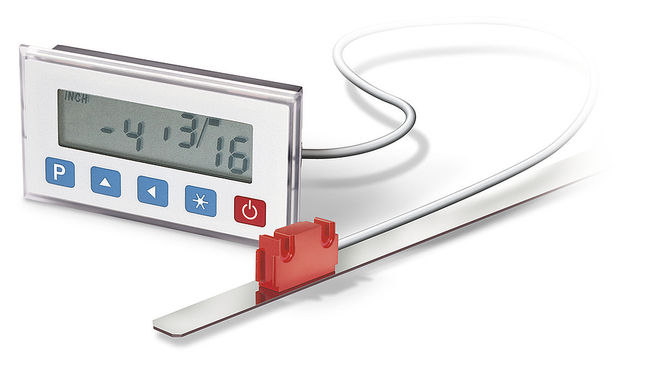Hi There,
I've got a 1979 Wadkin Bursgreen AGS10 table saw that I'm trying to finish up restoring and one of the things I would like to do is add a simple DRO to it. The kicker is it has a fantastic fence, but the basic table saw focused DRO set-ups out there won't really work with it given how it works. My goal has been to find some sort of magnetic tape based (simple) DRO that would allow me to do a custom install on the fence. For this it sort of needs three basic features:
1. has a small-ish remote reader (or remote display depending on how you look at it) that allows the display to be mounted onto the top of the fence separate from the reader (wire connection is fine).
2. The display/reader would need an option to be battery powered (DC connection could work... would just be a hassle).
3. The reader would need to be able to read off of a magnetic strip it was either in contact with or a few mm of.
It would be nice if it had the ability to set a zero by running a board through and then inputing a direct measurement. Proscale does this and iGauging does as well (I think).
Anyway, I've searched around and only found:
1. Wixey
2. Pro-scale
3. iGauging
I would be interested to hear if anyone has done something similar and/or if you have heard of any other options. Of the three iGauging seems to have the most possibility, but is still not ideal so just looking for ideas!
Thank you!
I've got a 1979 Wadkin Bursgreen AGS10 table saw that I'm trying to finish up restoring and one of the things I would like to do is add a simple DRO to it. The kicker is it has a fantastic fence, but the basic table saw focused DRO set-ups out there won't really work with it given how it works. My goal has been to find some sort of magnetic tape based (simple) DRO that would allow me to do a custom install on the fence. For this it sort of needs three basic features:
1. has a small-ish remote reader (or remote display depending on how you look at it) that allows the display to be mounted onto the top of the fence separate from the reader (wire connection is fine).
2. The display/reader would need an option to be battery powered (DC connection could work... would just be a hassle).
3. The reader would need to be able to read off of a magnetic strip it was either in contact with or a few mm of.
It would be nice if it had the ability to set a zero by running a board through and then inputing a direct measurement. Proscale does this and iGauging does as well (I think).
Anyway, I've searched around and only found:
1. Wixey
2. Pro-scale
3. iGauging
I would be interested to hear if anyone has done something similar and/or if you have heard of any other options. Of the three iGauging seems to have the most possibility, but is still not ideal so just looking for ideas!
Thank you!



